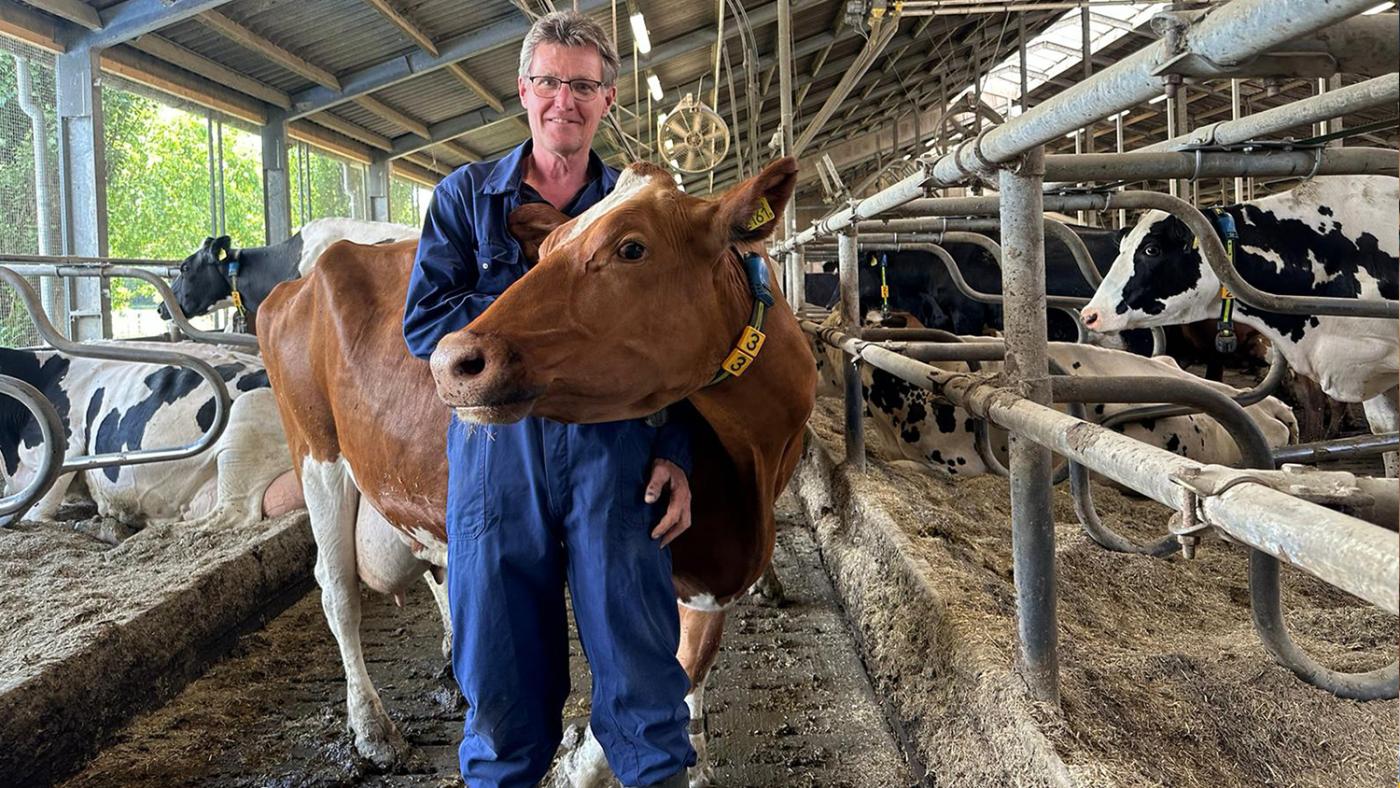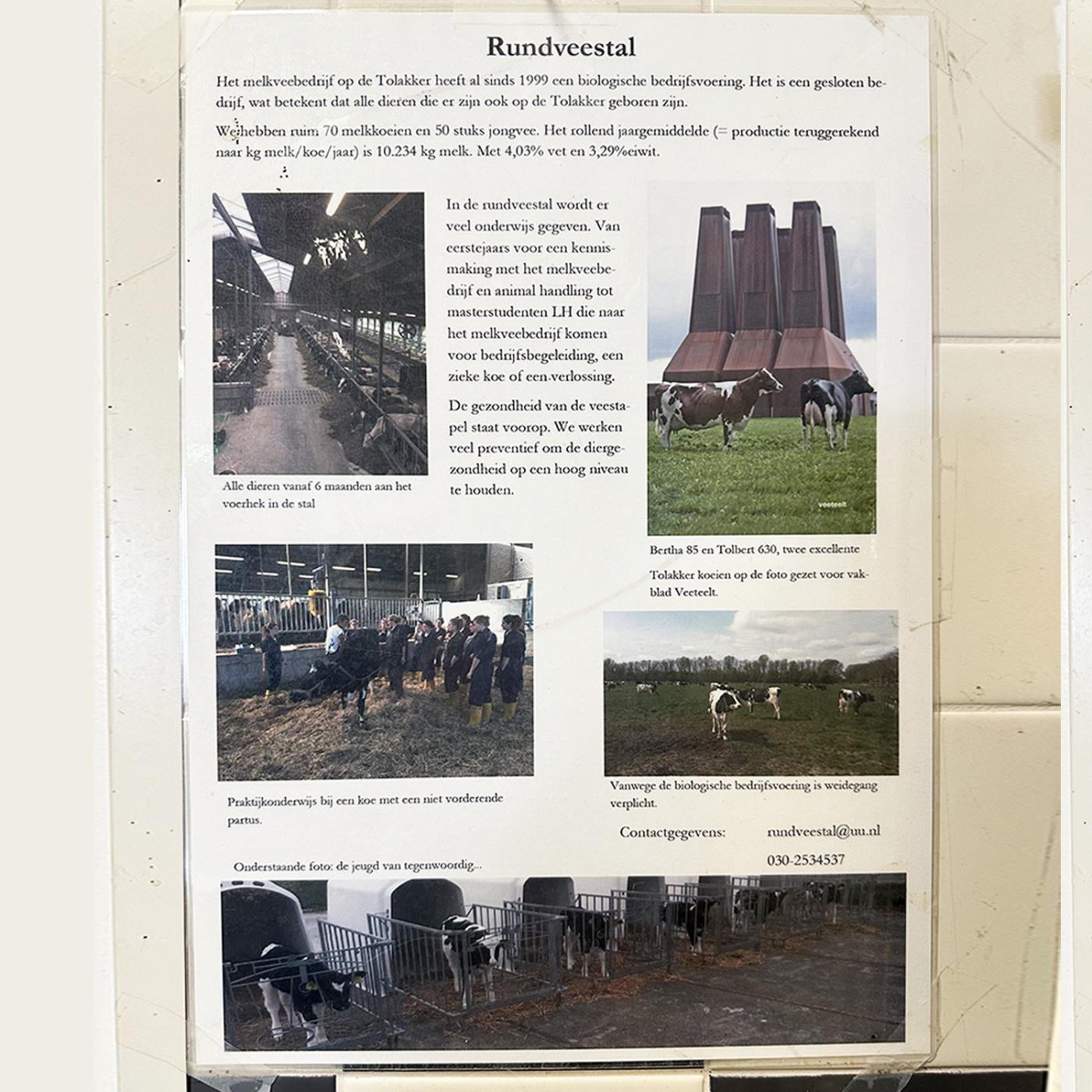Students want to show the good side of farming
'100,000 kilos of milk is a lot for an organically farmed cow'

At first, he doubted whether he should approach DUB to pitch an article about a cow that has been giving milk all her adult life. He knows how some sectors of society, including the university, regard animals kept in captivity to provide people with basic necessities. “You hear so many horror stories, so many stories that are twisted or untrue. We would like to tell the real story, showing how things really work in practice,” says Jorg Schellens, Chair of De Uithof Veterinary Cattle Breeders Club, part of the Faculty of Veterinary Medicine. “Like we do here at Tolakker.”
Tolakker serves the education of Veterinary Medicine students. There, students can see how a farm works and gain experience with cows, sheep and pigs. Their approximately seventy dairy cows are kept organically and the same will soon apply to pigs and sheep. “The cows are fed good organic feed, they are in a good environment, and they have good genes. Because they are kept organically, they still have access to massage brushes and no fertilisers or pesticides are used on the land. It is impressive for a cow kept on an organic farm to produce 100,000 kilos of milk. That can only happen if the cow is healthy and feels good about its life.”

A small party was held to celebrate Cow 33's milk-producing abilities. It's not yet time for this cow to be slaughtered. “But that time will come one day. It will be painful for some people to hear, but it is a production animal. Farmers must make a cost-benefit analysis, and that also goes for us here at Tolakker.”
But wouldn't Tolakker increase in prestige if the calves were allowed to stay with the mother for some time, instead of being separated from the mother immediately? “If the calves stay with their mother, they are at greater risk of infection from other cows or they can be kicked by other cows. Personally, I wouldn't be in favour of that, but I know that the faculty is setting up research programs to try this out and be able to scientifically map out the risks and opportunities better. In this way, the faculty and Tolakker aim to contribute to animal welfare in livestock farming, which seems very good to me.”
Jorg would like to invite all students and employees to come and take a look at the farm at Utrecht Science Park. “Everyone is always welcome here. You have to put those blue plastic covers on your shoes upon arrival, but you can enter the stable afterwards. I would like to show everyone how we treat cows here.”
